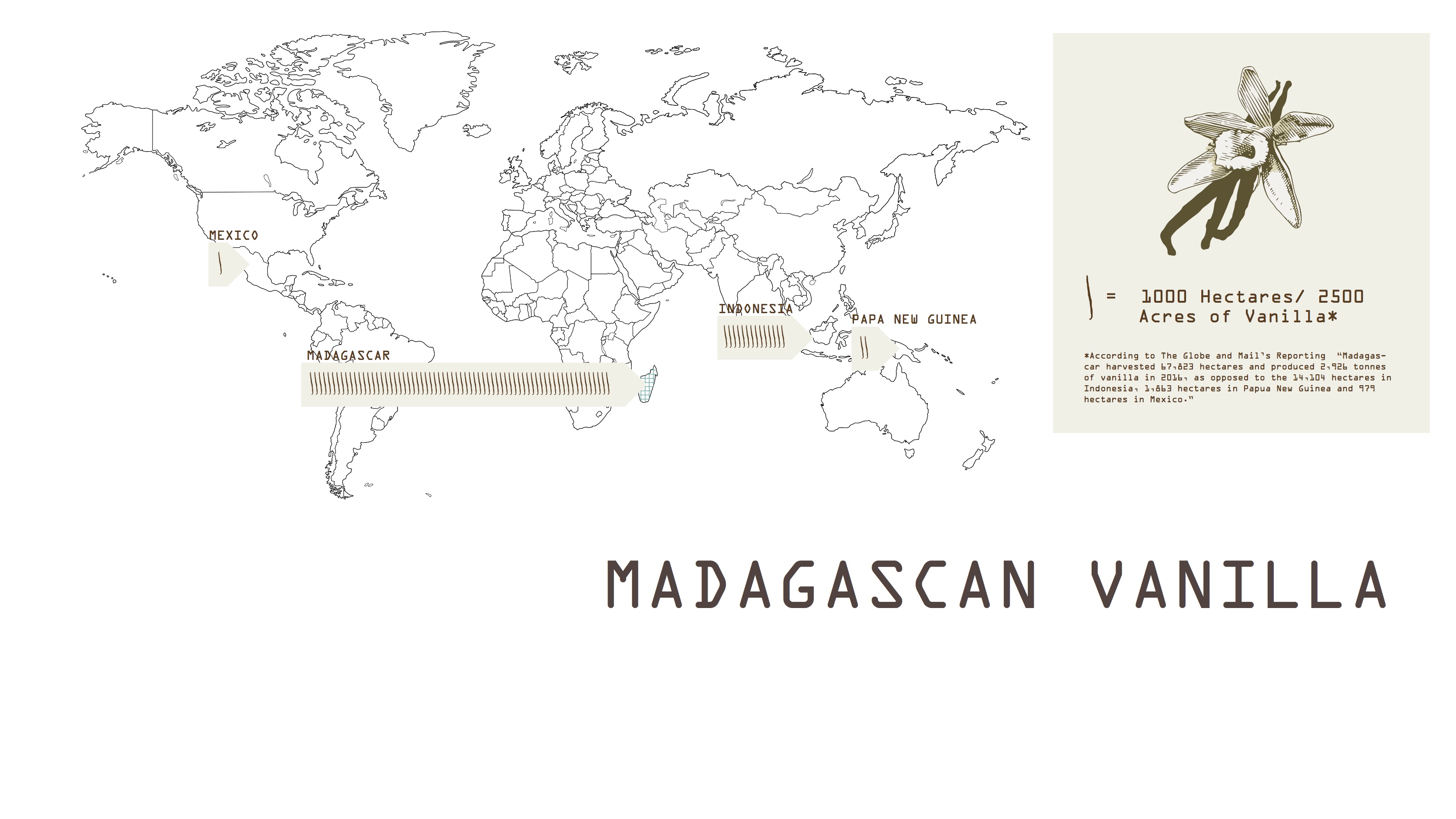Errors in Food Logistics

Kelley Johnson / 2019
Yale School of Architecture
Food is unique in the global supply chain for two reasons: unlike other products it decays or bruises, and it is consumed, becoming part of the body and the being. I began by compiling instances of exploitation and errors in food logistics. The first part of this project, a book, archives these errors in food logistics, from cashew picking in India to cheese storage in caves under Springfield, Missouri. The second part of the project zooms in to look more closely at the supply chain of the vanilla bean to understand the social and spatial implications of a single food along the supply chain.
Error
Error in the smoothness of logistics was a recurring theme classwide, but the supply chain system in not inherently bad. Anna Tsing states this explicitly in the text Supply Chains and the Human Condition, and I’ve found this in my own research as well.
Tsing uses the example of mushroom pickers in Oregon to show how, at their best, supply chains can offer sites for self-expression that are unavailable in more conventional forms of livelihood. In my own research, I found this same phenomenon in the case of the Brazil Nut industry in Bolivia. The market demand for Brazil nuts funded the building of infrastructure in that country, including factories and roads, which (from a western perspective) improved the standard of living for many Bolivians. The process of gathering Brazil nuts also provided an alternative to clear cutting, making this industry an example of sustainable agriculture.
I bring up these examples here, because I would like to emphasize that there are some positive implications of this system before I dive into the negative ones.

Errors in Food Logistics A-Z
Within the format of a book, I attempted to find a broad range of different errors in the food supply chain from A-Z. The book casts a wide net, showcasing a range of examples, from environmental injustices (such as the pesticides used on Dole bananas making the pickers infertile), to environmental racism (such as the hog farms in low income areas of North Carolina), to deforestation and invasive species(such as the farming of perch in Lake Victoria).
However, in the majority of these instances, the errors are born out of the friction between massive global corporations and the micro communities that pick, collect, and sell food.

Vanilla
An instance that is exemplary of this friction between large and small scale, the vanilla bean, is mapped out in the following drawings as a way to understand the spatial implications of this food item.

As a result of the spike in global vanilla demand, a dependency has been created, specifically on the vanilla that is sourced from Madagascar, which is the largest exporter of the vanilla bean. At 515 USD per kilogram, (which is about 235 USD per pound) one kilogram of vanilla is equal to roughly an entire year’s worth of income for the typical worker in Madagascar. For reference, silver is priced at 527 USD per kilogram.

The drawings show that an overload in the demand for vanilla worldwide has led to a spike in vanilla theft, premature vanilla harvesting, and product substitutions of less pure vanilla in place of what has historically been vanilla of the highest quality.
